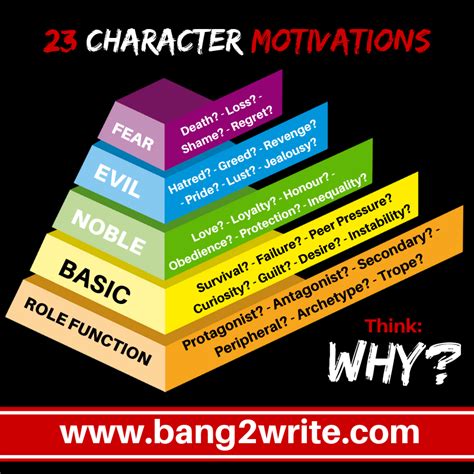The Power of Motivation: Understanding Why Your Characters Kill
In fiction, death is a powerful tool. It raises stakes, forces character growth, and propels the narrative forward. But a character's decision to kill—whether protagonist or antagonist—must be rooted in compelling motivation to feel authentic and impactful. A murder committed without sufficient reason leaves the reader feeling cheated, unconvinced, and ultimately, unengaged. This article delves into the psychology behind murderous acts in fiction, exploring the diverse motivations that can make a killing believable and impactful.
What Drives a Character to Kill? The Spectrum of Motivation
The reasons a fictional character might kill are as varied as the characters themselves. Understanding these motivations is key to creating a believable and compelling narrative. It's rarely a simple case of "evil" versus "good." Instead, it's a complex interplay of factors that can include:
Self-Preservation:
This is perhaps the most primal motivation. A character might kill to protect themselves from imminent danger, to escape captivity, or to prevent their own death. This often leads to justifiable homicide, though the moral ambiguity can still create compelling conflict. Consider a character forced to kill a pursuing attacker in self-defense – the act itself is violent, but the motivation is understandable.
Revenge:
A thirst for revenge is a classic and powerful motivator. The wronged party seeks retribution for a perceived injustice, often fueled by grief, anger, or betrayal. This can range from a carefully planned act of calculated vengeance to a spontaneous eruption of rage. The effectiveness of this motivation hinges on the believability of the initial transgression and the character's emotional journey.
Power and Control:
Killing can be a way to gain or maintain power. A character might eliminate rivals, competitors, or witnesses to consolidate their position or suppress dissent. This is often seen in thrillers and crime dramas, where the pursuit of power justifies increasingly violent acts. The internal conflict between ambition and conscience can create compelling character arcs.
Ideology/Beliefs:
Characters driven by strong ideologies or beliefs might kill in the name of a cause, a religion, or a political agenda. This can range from terrorist acts to acts of perceived justice within a distorted worldview. The challenge lies in portraying this without glorifying the violence while exploring the complexities of belief systems.
Mental Illness:
Mental instability can play a significant role in a character's decision to kill. Psychosis, sociopathy, or other mental health conditions can drastically alter a person's perception of reality and their capacity for empathy, leading to acts of violence that might seem inexplicable to others. This requires sensitive handling to avoid perpetuating harmful stereotypes.
Accident/Mistaken Identity:
Even unintentional killings can be powerful plot points. A death caused by negligence, a tragic accident, or mistaken identity can have far-reaching consequences, forcing characters to confront the weight of their actions, regardless of intent. The fallout from these actions can be just as dramatic as intentional killings.
H2: How to Write Believable Killing Scenes
Creating a convincing killing scene requires more than just describing the act of violence. It demands a deep understanding of your character's motivations and the emotional impact on both the killer and the victim.
- Show, Don't Tell: Avoid simply stating that a character killed someone. Instead, use vivid descriptions, sensory details, and internal monologues to immerse the reader in the moment.
- Explore the Aftermath: The immediate aftermath of a killing is crucial. How does the character react? Are they remorseful, exhilarated, or numb? Their response will reveal much about their personality and motivations.
- Consider the Victim: Don't forget the victim. Giving them a backstory and personality makes the killing more impactful, adding weight to the consequences of the act.
- Build the Tension: Lead up to the killing gradually. Build suspense, create anticipation, and showcase the internal struggle your character goes through before committing the act.
H2: Frequently Asked Questions About Character Motivations
How can I ensure my character's motivation to kill feels realistic?
Realistic motivation stems from a believable backstory and consistent character development. Explore the character's past, their relationships, their beliefs, and their vulnerabilities. The killing should feel like a logical, albeit extreme, consequence of their circumstances and personality.
What if my character kills without any apparent reason?
A seemingly motiveless killing can be effective, but it needs careful handling. It could suggest a deeper psychological issue, a supernatural element, or a twist that reveals a hidden motive later in the story.
How do I avoid making my killing scenes gratuitous or exploitative?
Focus on the emotional impact rather than the graphic details of the violence. Let the reader infer the brutality rather than describing it explicitly. The focus should be on the psychological consequences and the character's journey.
By understanding the spectrum of motivations behind a character's decision to kill and employing skillful writing techniques, authors can craft compelling and believable narratives that resonate with readers long after they've turned the final page. The power of motivation lies not just in the act itself but in the exploration of the complex human emotions that drive it.

